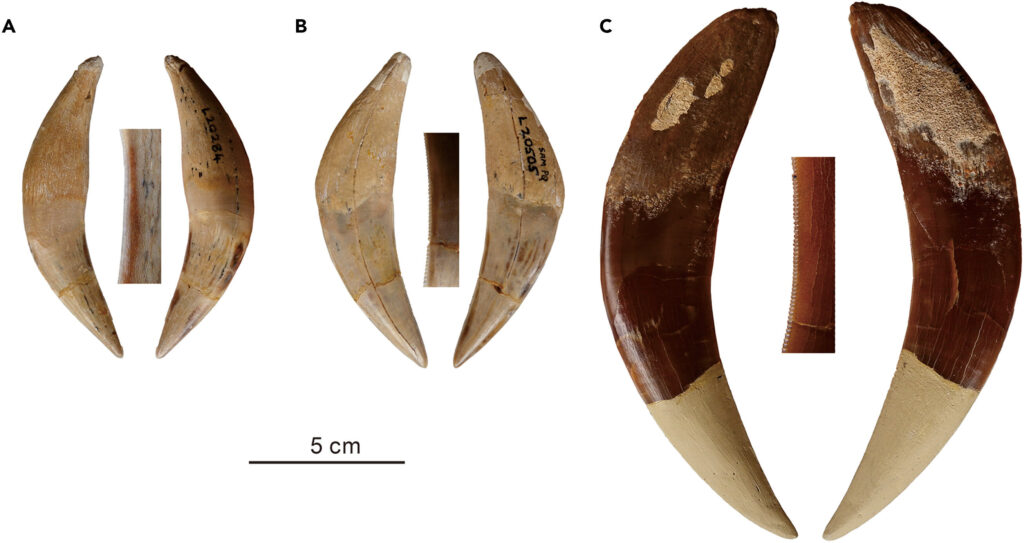Around 6-7 million years ago, when hominins—the group that includes modern humans—began to emerge, a variety of long-toothed carnivores, including sabertooth cats, inhabited Africa.
Researchers have discovered two new sabertooth species and the first family tree of the area’s old sabertooths by studying one of the biggest Pliocene fossil collections at Langebaanweg, north of Cape Town in South Africa. Their findings raise the possibility that sabertooth distribution in prehistoric Africa may not have been as uniform as previously thought, and the research sheds light on the paleoenvironment of the continent.
Senior author Alberto Valenciano, a paleontologist at Complutense University said that: “The known material of sabertooths from Langebaanweg was relatively poor, and the importance of these sabertoothed cats has not been properly recognized. Our phylogenetic analysis is the first one to take Langebaanweg species into consideration.”
Four different species were described in the research. Previously undiscovered species include Lokotunjailurus chimsamyae and Dinofelis werdelini. Dinofelis sabertooths are found all over the world, and its fossils have been discovered in North America, Europe, China, Africa, and the Middle East. Based on previous studies, the researchers anticipated that they would discover a new Dinofelis species in Langebaanweg. However, before to this research, Lokotunjailurus has only previously been discovered in Kenya and Chad. This shows that they may have been dispersed between 5-7 million years ago over all of Africa.
According to the reports of Physorg, all of the sabertooth fossils examined in this study are kept in the Iziko Museums of South Africa, where Valenciano worked as a postdoctoral fellow. The final project was assembled by a group of colleagues from China, South Africa, and Spain. The physical characteristics of each sabertooth species, such as the presence or absence of teeth, the shape of the jaw and skull, and the tooth structure, were categorized and coded into a matrix that could estimate how closely related each sabertooth was to its evolutionary relatives in order to create a family tree.



The resultant population structure of Langebaanweg sabertooths (Machairodontini, Metailurini, and Feline) is a reflection of the era’s warming climate and environmental changes. For instance, the existence of Machairodontini cats, which are bigger and more suited to sprinting quickly, implies that Langebaanweg once had broad grassland habitats.
The existence of the Metailurini cats, however, indicates that there may have also been other, more covered settings, like woods. While finding both Metailurine and Machairodonti species suggests that Langebaanweg had a mix of grassland and forest 5.2 million years ago, the abundance of Machairodonti species in comparison to other fossil localities from Eurasia and Africa indicates that southern Africa was transitioning toward more open grasslands at this time.
“The continuous aridification throughout the Mio-Pliocene, with the spread of open environments, could be an important trigger on the bipedalism of hominids. The sabertooth guild in Langebaanweg and its environmental and paleobiogeographic implications provide background for future discussion on hominid origination and evolution,” the authors write.
The researchers also discovered that the composition of sabertooths in Langebaanweg closely resembles that of Yuanmou, China. Longchuansmilus sabertooths from Yuanmou may even have a close evolutionary link with Lokotunjailurus species from Africa.
Author Qigao Jiangzuo, a paleontologist at Peking University, said that: “This suggests that the ancient environment of the two regions was similar or that there was a potential migration route between the Langebaanweg and Yuanmou.”
More fossil data might clarify the relationship between these two locations for paleontologists.
“The two new sabertooths are only an example of the numerous unpublished fossils from Langebaanweg housed at Iziko in the Cenozoic Collections. This brings to the fore the need for new and detailed studies of Langebaanweg fauna.” said Romala Govender, a curator and paleontologist at the Iziko Museums in South Africa.
